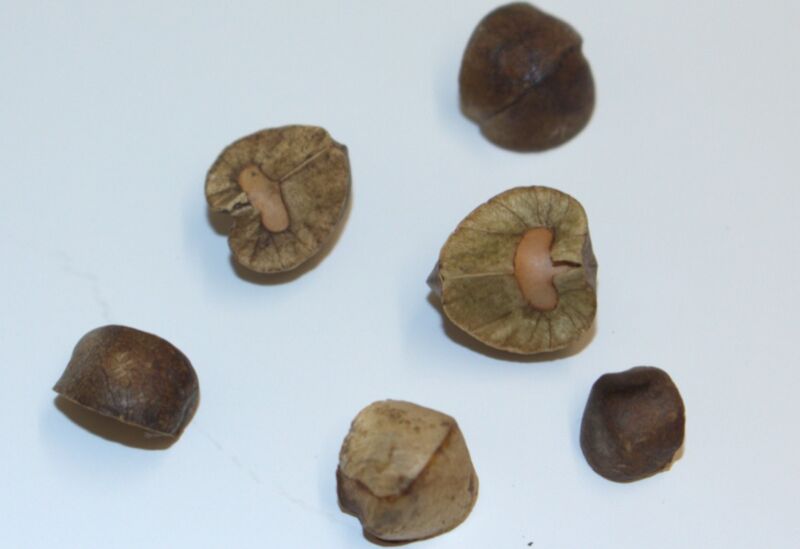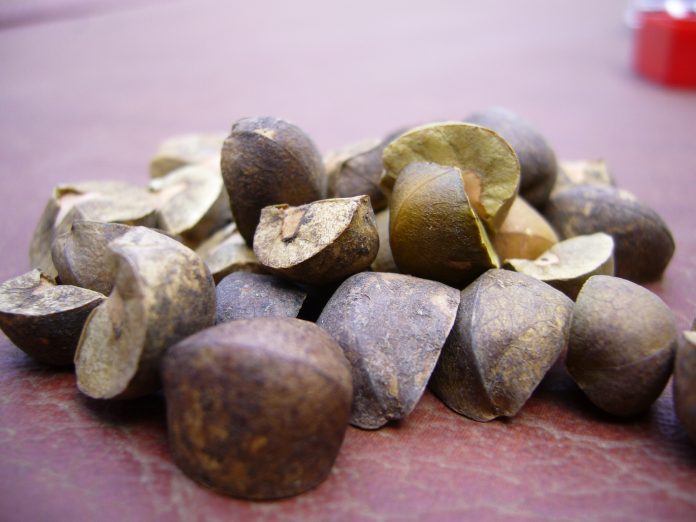
Mexican jumping beans have been a curiosity for many an inquisitive child, and yes, they really do "jump," thanks to the presence of tiny moth larvae inside the seed pods. According to a recent paper published in the journal Physical Review E by physicists at Seattle University, those jumps can help the moth larvae inside find shade to survive on hot days. And the jumping movements seem to follow a random walk strategy in order to do so.
The notion of a random walk is based in part on the physics concept of Brownian motion. Even though this technically describes random collisions between particles, it's a useful model that can easily be adapted to lots of different systems, biological, physical, or otherwise. The concept dates back to 1827, when a scientist named Robert Brown was studying pollen particles floating in water under a microscope. He noted a strange jittery motion and thought the pollen might perhaps be alive. But when he repeated the experiment using particles of dust, which he knew were not "alive," he still saw the jittery motion.
Brown never determined what caused the motion, but Albert Einstein did, in a 1905 paper in which he sought to confirm the existence of atoms and molecules. Einstein's relevant insight was that molecules in a fluid like water would randomly move about and collide with other small particles suspended in the fluid, like pollen or dust, giving rise to the "jittering" Brown had observed some 80 years earlier.
Imagine you are walking along a straight line. Each time you take a step, you flip a coin. If it's heads, you step forward; if it's tails, you step backward. Because the outcome of each coin flip is independent of all the others, there is always an equal chance that it will land on heads or tails with each toss. That means that your future final position is independent of your original starting position—hence the term "random walk." The concept has since been adapted to model stock market fluctuations, population genetics (specifically genetic drift), and neuron firing in the brain, among other applications. And during World War II, Brownian random walks were used to model the distance that an escaped prisoner would travel in a given time, since it can be an effective search strategy, particularly over a small, densely populated area.
That's where the Mexican jumping beans come in. The beans are actually seed pods from a shrub native to Mexico and are more closely related to spurges than legumes, despite being colloquially known as beans. Moths lay their eggs on the hanging seed pods in the spring when the shrub is flowering. When the eggs hatch, the new larvae burrow into the pods and start eating the seeds. Meanwhile, the pods ripen and fall to the ground, splitting into three smaller segments. These are what we commonly think of as Mexican jumping beans.
The larvae are still inside (they can survive for months in there), curling up and uncurling periodically, and when their heads hit the pod walls, the beans "jump." They jump more when temperatures start to rise, and hot direct sunlight can kill the larvae. The prevailing hypothesis is that the beans jump in order to move to a cooler, shady spot so they can survive long enough to reach the pupal stage. Once the full-grown moth emerges from the seed pod, it generally only lives for a few days, because such is the cycle of life.
Prior research identified the ideal range of temperatures that initiate the jumping behavior of the larvae. Beans subjected to temperatures in the 20-30° Celsius range (68-86° F) are the most active compared with jumping beans at higher or lower temperatures. Another study classified the three basic types of motion: flipping, rolling, and jumping, with jumping being the most common by far (87 percent). Devon McKee and Pasha Tabatabai of Seattle University wanted to build on that earlier work to quantitatively describe the statistical behavior of the jumps.



3175x175(CURRENT).thumb.jpg.b05acc060982b36f5891ba728e6d953c.jpg)

Recommended Comments
There are no comments to display.
Join the conversation
You can post now and register later. If you have an account, sign in now to post with your account.
Note: Your post will require moderator approval before it will be visible.